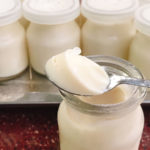A new trend is taking over social media, with people seeking a natural way to clean their cookware. The latest “hack” involves using fermented rice, a unique ingredient in Vietnamese cuisine, as a cleaning agent to achieve sparkling results.
The “Fermented Rice” Trend for Sparkling Cookware

Try this simple trick using fermented rice to clean your cookware and notice the difference. (Image source: VnExpress)
Hundreds of people in groups like “Cleaning Addicts” and “Kitchen Lovers” have recently shared their experiences with using fermented rice to clean their pots and pans. Many claim that this method is not only effective and inexpensive but also environmentally friendly. However, there are also those who have tried it without success.
According to TS Vu Thi Tan, a lecturer in Inorganic Chemistry at Hanoi University of Technology, fermented rice contains lactic acid, which has a mild acidic nature. Acid is known for its ability to remove iron rust and can effectively eliminate stains from cookware, restoring its shine. To enhance the cleaning power of fermented rice, it is often combined with baking soda, which has mild abrasive and alkaline properties. This dynamic duo creates a fizzing reaction that helps lift burnt food residue from the cookware’s surface.
However, as TS Tan points out, fresh stains are easier to remove than those that have set in over time. Therefore, it is essential to clean your cookware regularly to avoid spending excessive time and effort on stubborn stains.
Benefits of Using Fermented Rice for Sparkling Cookware
Compared to using strong acidic cleaning products, the fermented rice method offers several advantages:
Effective and Safe Cleaning
The mild acidity of fermented rice can tackle tough stains, grease, and buildup on cookware. Many who have shared their experiences with this method report impressive results. As a natural cleaner, fermented rice is free from harmful chemicals, reducing potential health risks associated with industrial cleaning products.
Cost-Effective
Fermented rice is an inexpensive and easily accessible ingredient, making it a cost-effective alternative to specialized cleaning products.
Environmentally Friendly
Using fermented rice as a cleaning agent reduces the amount of chemical waste released into the environment, contributing to a healthier ecosystem.

Fermented rice, containing lactic acid, effectively removes stains and restores the shine to cookware. (Image source: Supper Clean)
How to Use Fermented Rice for Sparkling Cookware
To effectively clean your cookware with fermented rice, you’ll need the following:
– A bowl of fermented rice (either store-bought or homemade)
– Baking soda
– A brush or sponge
Start by mixing a sufficient amount of fermented rice with a little baking soda to form a thick paste. Apply this paste generously to the entire surface of the cookware, especially on stubborn stains. Let it sit for at least 60 minutes or overnight to allow the acid in the fermented rice to work its magic.
Then, use the brush or sponge to scrub away the stains. You’ll notice the buildup and discoloration gradually disappear. Finally, rinse the cookware with warm water and dry it thoroughly.
Precautions When Using Fermented Rice for Cleaning
While the fermented rice cleaning method offers many benefits, keep the following in mind:
– Not all cookware is suitable for cleaning with fermented rice. Aluminum cookware or those with non-stick coatings may be susceptible to corrosion or damage when exposed to the acid in fermented rice.
– The effectiveness of fermented rice may vary depending on the type of cookware and the severity of the stains. It is advisable to perform a patch test before applying it to all your cookware.
– Fermented rice has a distinct smell and sour taste, so ensure you rinse the cookware thoroughly to avoid any residual odor or taste affecting your food.
– If you have sensitive skin, consider wearing gloves when using fermented rice to avoid potential irritation.
Source: VTC news
8 Bathroom Cleaning Hacks to Save Time and Money That Everyone Should Know
The bathroom is considered the dirtiest place in the house. To save both time and money on bathroom cleaning, learn these 8 tips.





































